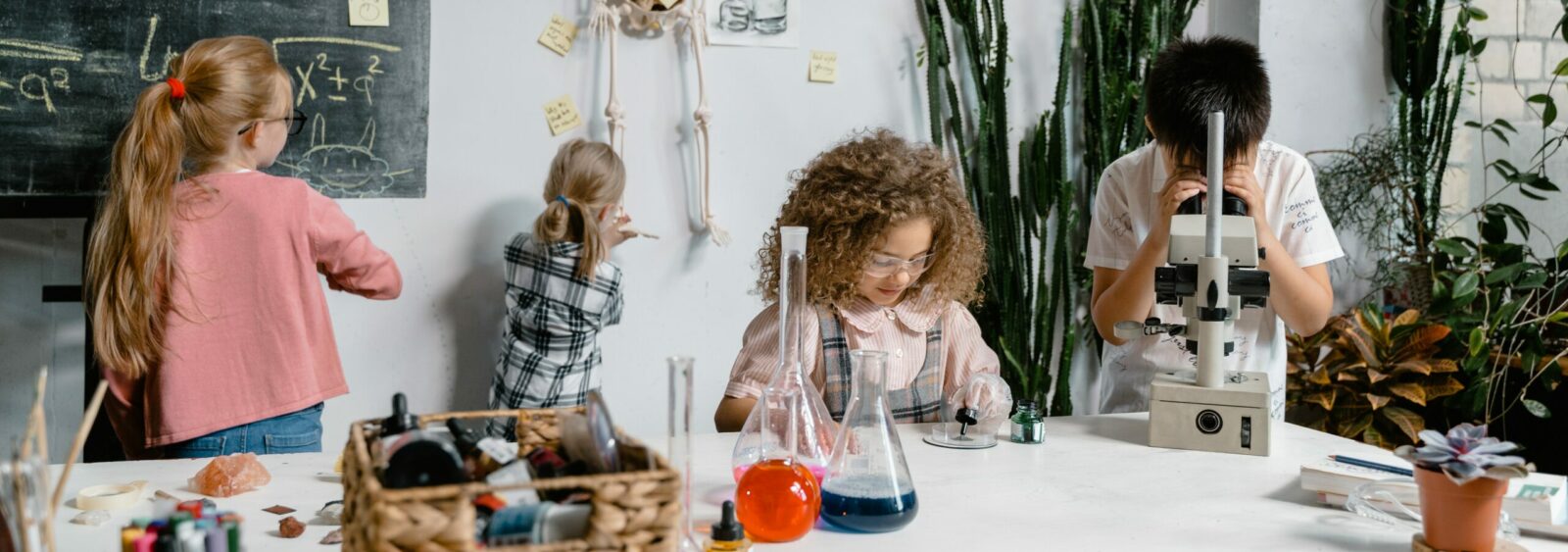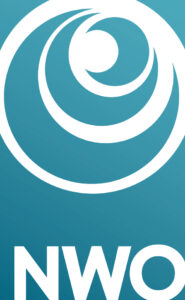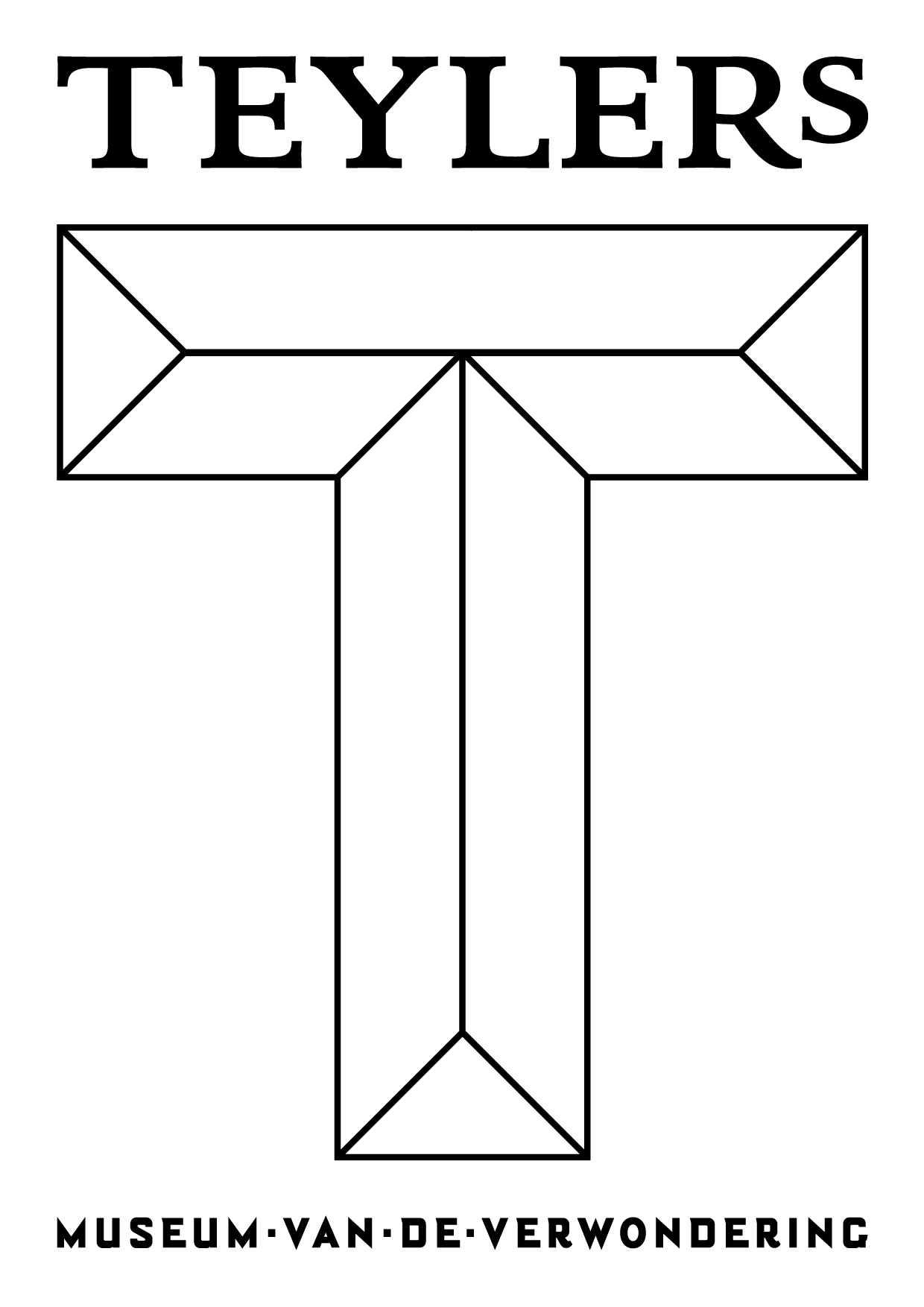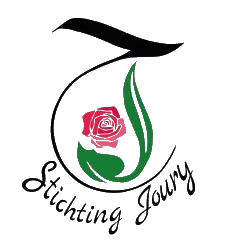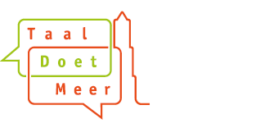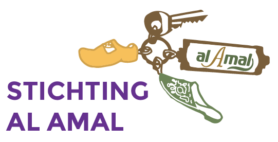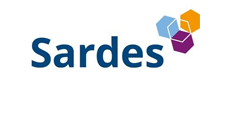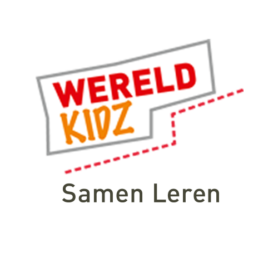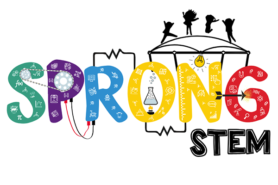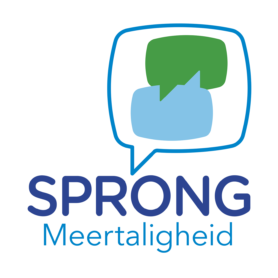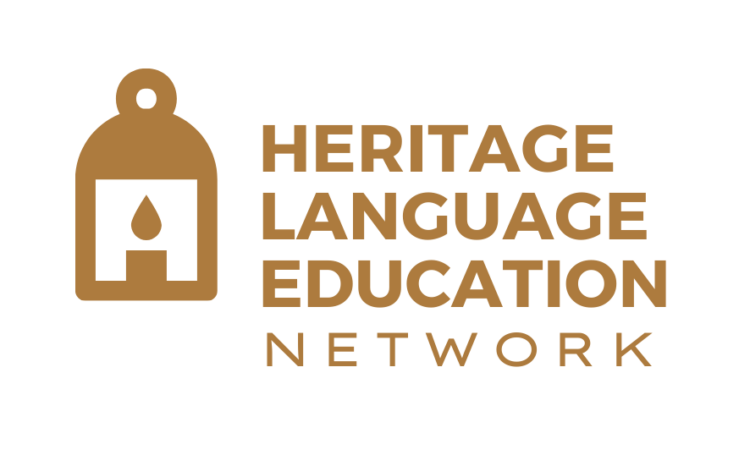Grist to the mill of multilingualism: a connection between language and content
Some approaches for the use of students’ home languages can be applied for all sorts of learning objectives. A teacher can, for instance, ask two students who speak Farsi to solve a problem together in their home language and then try it in Dutch. This is an approach that is independent of the content that is being taught. But, sometimes opportunities to use home languages can be close to a specific learning objective.
Anass and Younes, student teachers in the subject of Design and Technology, made a video about the history of the windmill. Their video shows windmills in old Arabic manuscripts, and it explains how such manuscripts were used to develop science and technology in the Western world. The Arabic language in those manuscripts can give students with an Arabic or Islamic background a feeling of recognition. In the screenshots below we see Younes and Anass enthusiastically explaining this development.
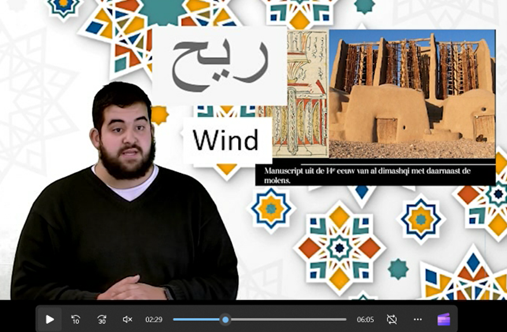
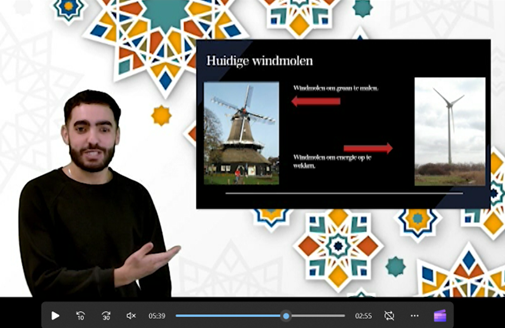
Natasja Hoegee, an experienced teacher at an Islamic school, was very pleased when she saw the video and she encouraged the student-teachers to make more teaching materials along this line. In a reaction via LinkedIn she wrote:
“What a beautiful movie [..]. They also made it so much fun, really very suitable for students. At our school they are very happy with this. A connection between the [Islamic] golden age and the modern windmill. I work at an Islamic primary school [..] this is also very good for their self-confidence, the Arabic words, really great.”
Natasja emphasises that this ‘content based approach’ of using home languages is grist to the windmill of multilingualism. In the teaching materials that Natasja developed herself, one can also see that there is a match between content, pedagogy and the use of multiple languages.
In the research literature, such an approach would be referred to as ‘cultural border crossing’ (Lee & Buxton, 2008). Within Multi-STEM we would also call this a form of ‘boundary crossing’ or ‘boundary work’. We help students to move between different worlds and identities, and boundaries between cultural and linguistic identities can shift, also for the teacher. This example also shows how multilingualism and interculturality can be of value to all students. In addition, it can be particularly beneficial for students with a migration background for their overall motivation for learning at school, but also for a possible choice for further education in technology (Youngworks, 2021).
Of course, the history of maths, science, and technology is a relatively easy target if we want to use this content based approach of ‘translanguaging’ for students with an Arabic background, because there is a wealth of examples of Arabic contributions to science, technology and maths. However, teachers are creative people and they will find other opportunities in the STEM domain. One could think of popular ‘citizen science projects’ that span across borders, or design tasks that include an international component.
Perhaps the most important lesson that people like Younes, Anass, and Natasja teach us is this: a focus on cultural and linguistic diversity at school does not have to be cumbersome. On the contrary, in the video below we see teachers having fun with it, which can certainly be contagious for many children.
Gerald van Dijk | Subproject leader ‘International’ University of Applied Sciences Utrecht – lectureship on curriculum in primary education and involved in Multi-STEM
Written with input from:
– Younes El Boujjoufi en Anass Haryachi – student teachers Design and Technology (University of Applied Sciences Utrecht)
– Natasja Hoegee – teacher and ESL teacher (Al Iman Primary School)
Sources:
- Lee, O., & Buxton, C. (2008). Science curriculum and student diversity: Culture, language, and socioeconomic status. The Elementary School Journal, 109(2), 123-137.
- YoungWorks (2021) Jongeren met een migratieachtergrond en hun keuze voor techniek Platform Talent voor Technologie link
Currently, this blog is only available in English and Dutch. To read it in another language we recommend using the translation tool DeepL.
